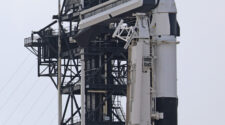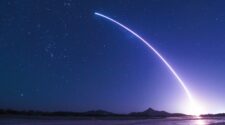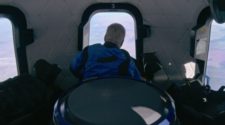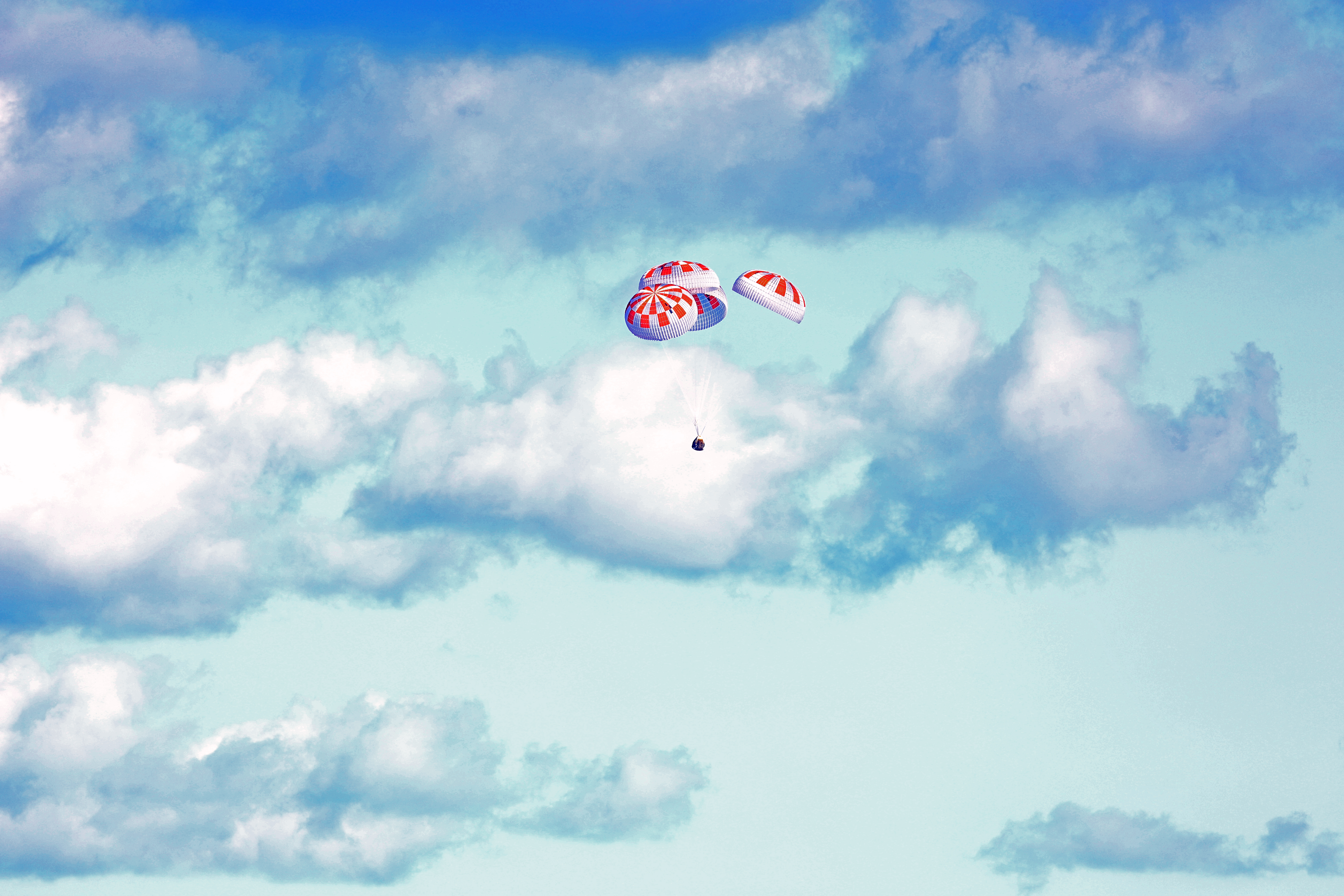
The United States of America moved one giant step closer to regaining the ability to send astronauts into space today. Early this morning SpaceX’s Crew Dragon capsule splashed down in the Atlantic Ocean off the coast of Florida after conducting a five-day test mission docked to the International Space Station.
“If you just think about the enormity of this flight and all of the prep that went into it – getting the pad refurbished, getting the flight control room set up, getting the vehicle built, getting the Falcon 9 ready, all of the analysis and mission support that went into it – it’s just been a tremendous job. Our NASA and SpaceX teams worked seamlessly not only in the lead-up to the flight but in how we managed the flight,” said Steve Stich, deputy manager of NASA’s Commercial Crew Program.
The mission racked up a number of “firsts” in less than a week.
- First commercially-built and operated American crew spacecraft and rocket to launch from American soil on a mission to the space station.
- First commercially-built and operated American crew spacecraft to dock with the space station.
- First autonomous docking of a U.S. spacecraft to the International Space Station.
- First use of a new, global design standard for the adapters that connect the space station and Crew Dragon, and also will be used for the Orion spacecraft for NASA’s future mission to the Moon.
This new era in U.S. spaceflight opened in spectacular fashion during the middle of the night last Saturday, March 2 with the blastoff of the first ever privately built SpaceX Crew Dragon spacecraft. The Crew Dragon liftoff was flawless and put on a dazzling sky show for the many thousands of spectators and tourists who flocked to the Florida Space Coast to witness history in the making. Lift off of the test flight dubbed Demo-1 occured at 2:49 a.m. EST (0749 GMT) Saturday from historic Launch Complex-39A at NASA’s Kennedy Space Center in Florida. That moment coincides with the time when Earth’s rotation carries the rocket into the plane of the ISS to enable a successful rendezvous and docking with the fuel on board.
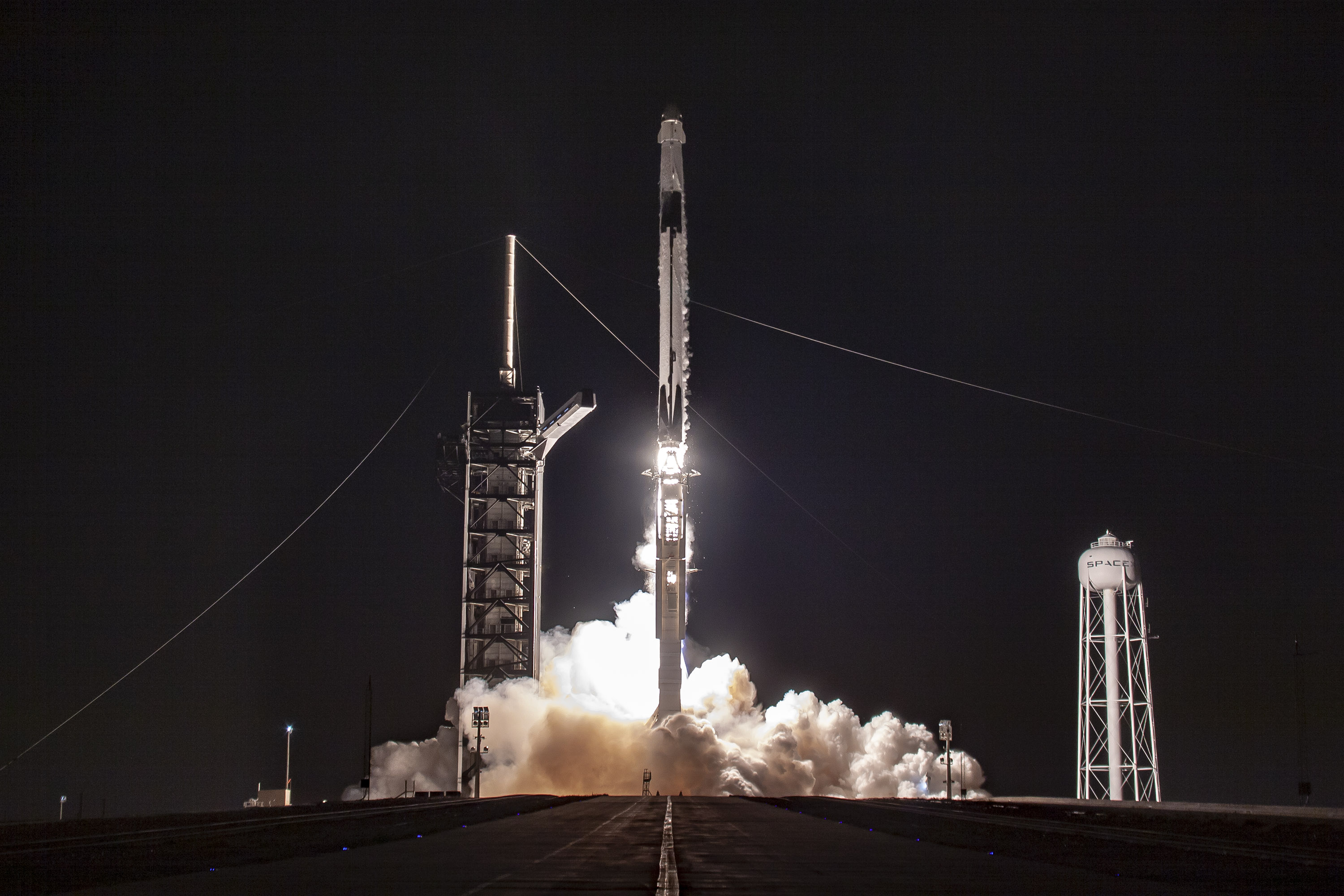
The event was transformational because for the first time in the Space Age, private companies – not NASA – are responsible for designing, testing, manufacturing and launching human rated space ships.
“Today’s successful launch marks a new chapter in American excellence, getting us closer to once again flying American astronauts on American rockets from American soil,” said NASA Administrator Jim Bridenstine, at the post launch media briefing at the Kennedy Space Center.
“I proudly congratulate the SpaceX and NASA teams for this major milestone in our nation’s space history. This first launch of a space system designed for humans, and built and operated by a commercial company through a public-private partnership, is a revolutionary step on our path to get humans to the Moon, Mars and beyond.”
The day long rendezvous and docking procedure for the Demo-1 mission came off with out a hitch as the commercially built SpaceX Crew Dragon capsule closed in on the ISS on its maiden un-piloted mission. Barely 24 hours after blastoff from the Florida Space Coast, SpaceX’s maiden Crew Dragon spacecraft successfully attached to the forward facing port on the International Space Station’s Harmony module for a “soft capture” at 5:51 a.m. EST last Sunday while the station was traveling more than 250 miles over the Pacific Ocean, just north of New Zealand.
The gumdrop shaped vessel operated in a fully autonomous mode after completing 18 orbits of Earth since launching in the middle of the night Saturday morning.
“As the spacecraft approached the space station, it demonstrated its automated control and maneuvering capabilities by arriving in place at about 492 feet (150 meters) away from the orbital laboratory then reversing course and backing away from the station to 590 feet (180 meters) before the final docking sequence from about 65 feet (20 meters) away,” NASA said in a statement.
Some 10 minutes later Dragon completed its ‘hard dock’ to the station at 6:02 a.m. EST – “thus accomplishing the first autonomous docking of any U.S. spacecraft to the International Space Station.”
The forward port on Harmony is the same port previously utilized by NASA’s visiting Space Shuttle orbiters that were retired following the final flight in July 2011 on the STS-135 mission.
But the Harmony port has been upgraded with a new International Docking Adapter or IDA hauled to orbit in the trunk of the prior SpaceX CRS-9 Cargo Dragon resupply mission and installed using the station’s Canadian built Canadarm-2 and a spacewalk by station astronauts in August 2016.
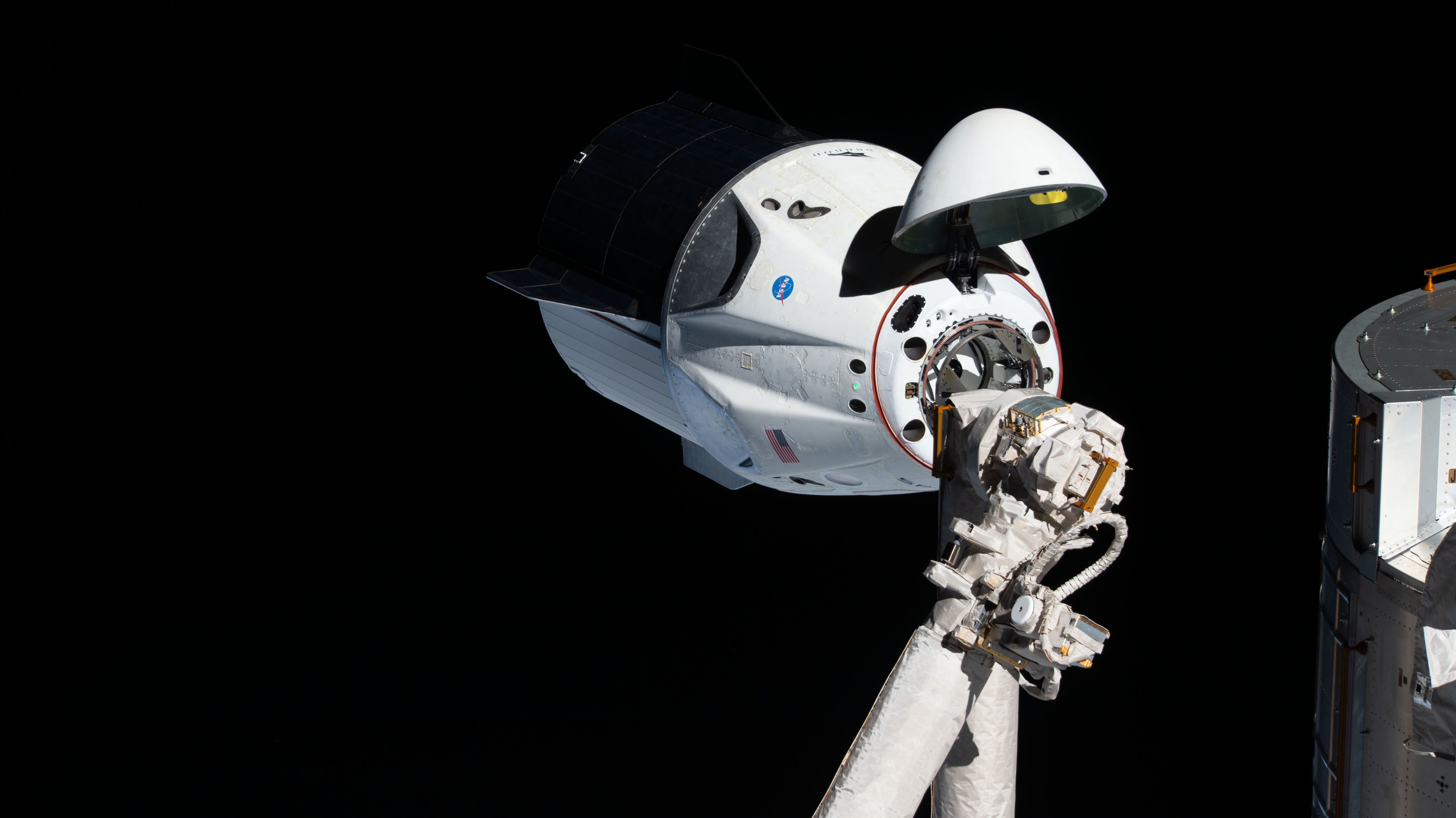
Just three hours after docking, following standard leak checks and pressurization, the Expedition 58 crew members – NASA astronaut Anne McClain, David Saint-Jacques of the Canadian Space Agency, and Russian cosmonaut and Expedition 58 commander Oleg Kononenko – opened the hatch and entered the Dragon.
Everything went flawlessly.
Loaded on board Dragon was Ripley, seated inside as a simulated astronaut as what NASA dubs “an anthropomorphic test device” named after the protagonist in the movie ‘Alien.” Ripley is outfitted with sensors to provide data about potential effects on future astronauts who will travel in the Crew Dragon.
Also included was more than 400 pounds of crew supplies and equipment to the space station, including bulk overwrap bags containing more than 1,000 food and drink packages for the crew, as well as an Earth plush toy that became instantly famous when shown off by McClain.
.@AstroAnnimal welcomes humans aboard the first @SpaceX #CrewDragon to visit the station and introduces two special guests, Ripley and Little Earth, ushering in the era of @Commercial_Crew. #LaunchAmerica pic.twitter.com/QqzEEgDWzt
— Intl. Space Station (@Space_Station) March 3, 2019
Under normal circumstances Dragon will be able to launch with a crew of four and up to 220 pounds of supplies thus “enabling the expansion of the inhabitants of the space station, increasing the time dedicated to research in the unique microgravity environment, and returning more science back to Earth.” The spacecraft will also be able to remain docked with the ISS for up to 210 days.
After five days at the ISS, the Crew Dragon undocked overnight on Friday and began its descent back into Earth’s atmosphere with a de-orbit burn a few hours later. The capsule endured a parachute assisted splashdown in the Atlantic Ocean landing just as expected at 8:45 a.m. EST approximately 230 miles off the coast of Cape Canaveral, Florida. Teams closely monitored the parachute system and entry control system operation as they have been changed from cargo Dragons to provide higher reliability for crew flights. SpaceX’s recovery ship, Go Searcher, retrieved the scorched Crew Dragon and is transporting it back to port.
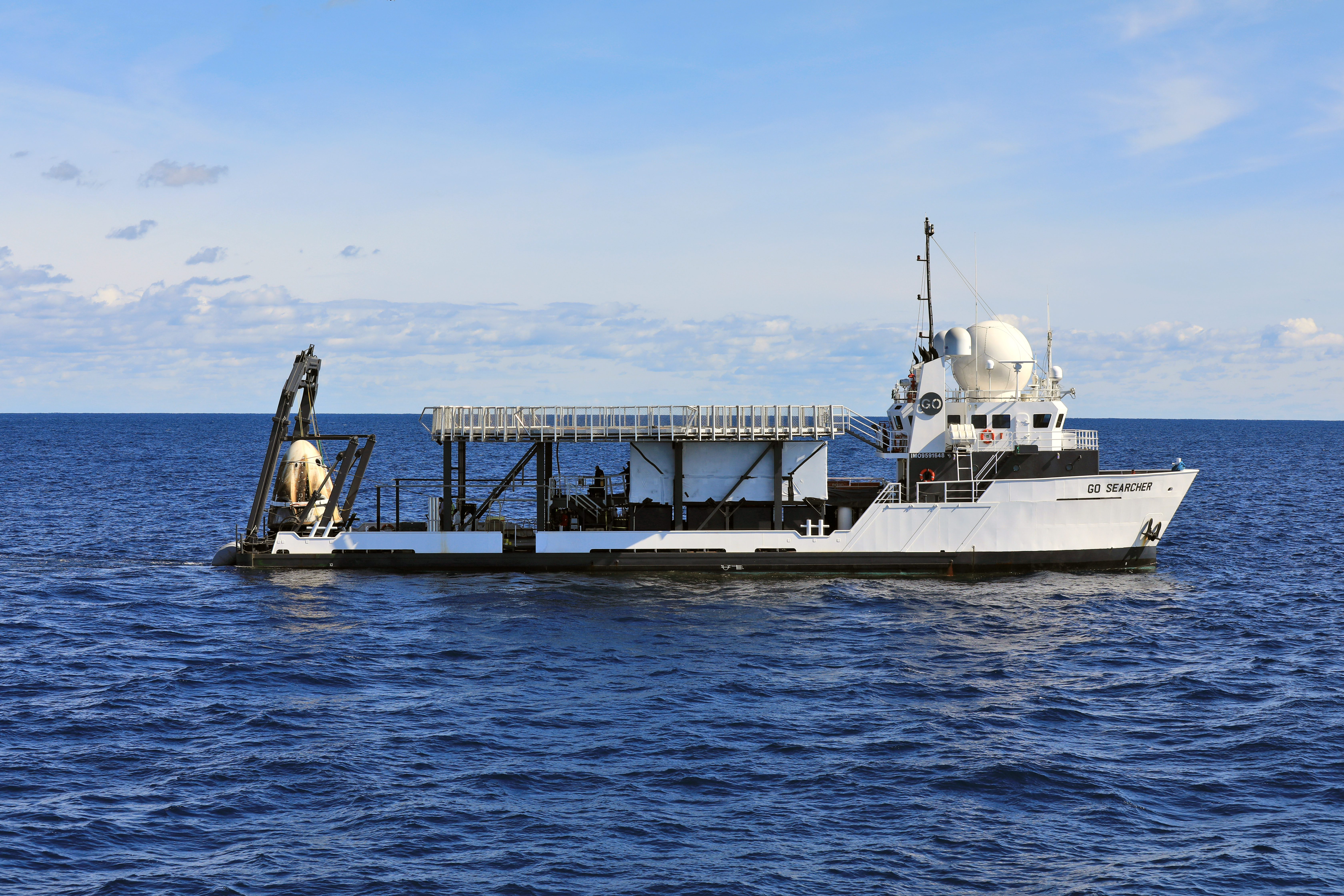
SpaceX, NASA and the Go Searcher crew had already practiced hoisting capsules holding NASA astronaut crews on deck after their fiery return from space and splashdown in the Atlantic Ocean – using a mockup Crew Dragon. Go Searcher has been upgraded with a crane to enable recovery of the crew capsule by hoisting it from the waters off Florida’s east coast launch base under a normal scenario. A helipad and medical treatment facility also are installed on board as part of extensive modifications to the ship.
“Today’s successful re-entry and recovery of the Crew Dragon capsule after its first mission to the International Space Station marked another important milestone in the future of human spaceflight,” said NASA Administrator Jim Bridenstine. “I want to once again congratulate the NASA and SpaceX teams on an incredible week. Our Commercial Crew Program is one step closer to launching American astronauts on American rockets from American soil. I am proud of the great work that has been done to get us to this point.”
“We were all very excited to see re-entry, parachute and drogue deploy, main deploy, splashdown – everything happened just perfectly,” said Benji Reed, director of crew mission management at SpaceX “It was right on time, the way that we expected it to be. It was beautiful.”
NASA and SpaceX will use data from Demo-1, along with planned upgrades and additional qualification testing, to further prepare for Demo-2, the crewed flight test that will carry NASA astronauts Bob Behnken and Doug Hurley to the International Space Station. NASA will validate the performance of SpaceX’s systems before putting NASA astronauts Bob Behnken and Doug Hurley on board for the Demo-2 flight, currently targeted for no earlier than July. . In the meantime, after SpaceX processes data from this mission, teams will begin refurbishing this same Crew Dragon for its next mission, an in-flight abort test targeted to take place as soon as June.
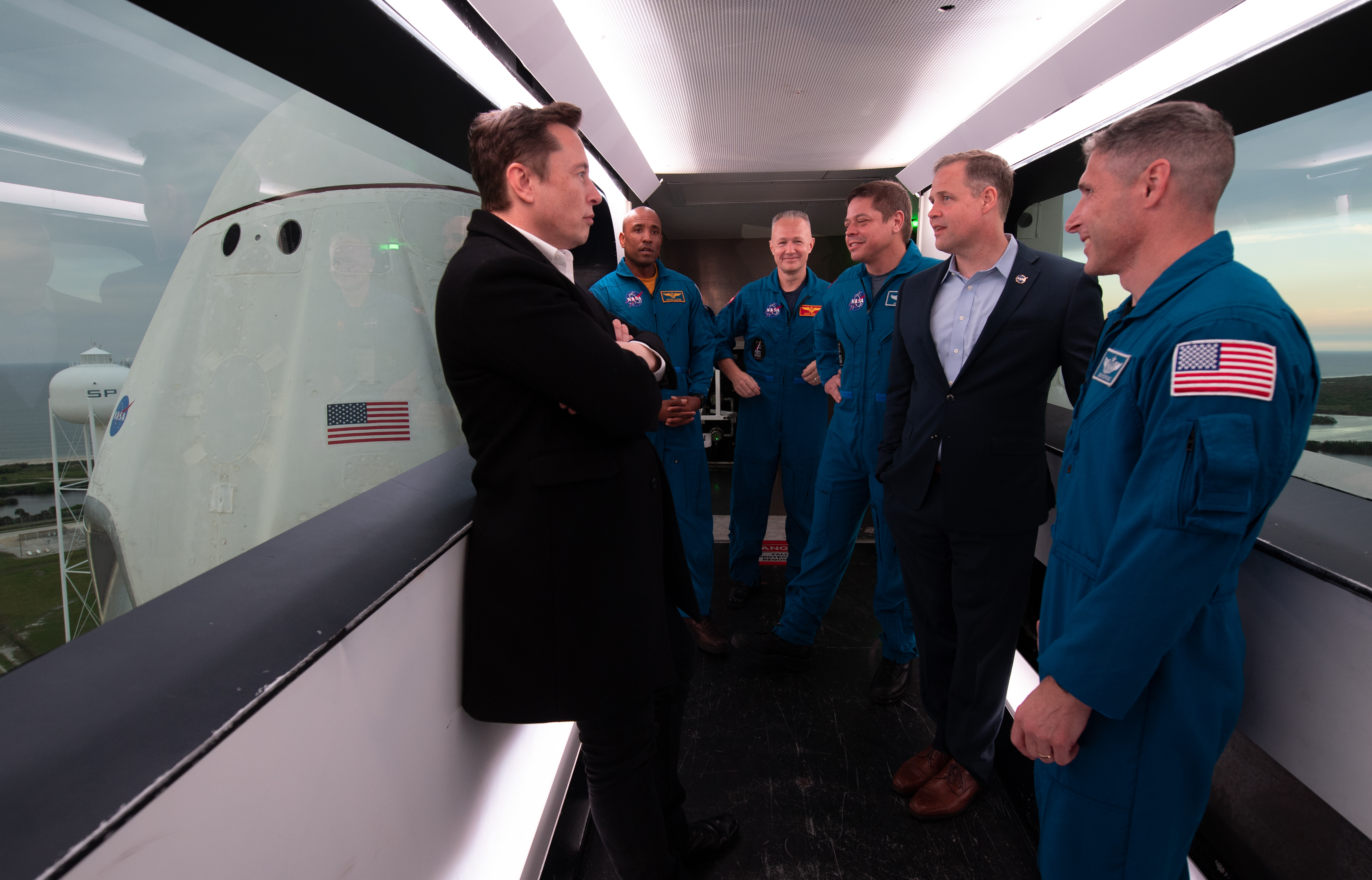
“For the first time, we’ve gotten to see an end-to-end test, and so now we’ve brought together the people, the hardware and all the processes and procedures, and we’ve gotten to see how they all work together, and that’s very important as we move toward putting people onboard,” said NASA astronaut Mike Hopkins, who will crew SpaceX’s first operational mission to the space station following Demo-2. “I’m, personally, very anxious to hear how Ripley is feeling after they pull her out of the capsule and get her onto the recovery vehicle.”
“It has been 17 years to get to this point, 2002 to now, and an incredible amount of hard work and sacrifice from a lot of people that got us to this point,” said Elon Musk, CEO and lead designer at SpaceX. “SpaceX would not be here without NASA, without the incredible work that was done before SpaceX even started and without the support after SpaceX did start.”
SpaceX is not the only private company targeting crewed launches in 2019. Boeing is building its own capsule dubbed Starliner which is also under contract with NASA to ferry American and partner astronauts to Low Earth Orbit (LEO) and the ISS and safely back home.
Both Boeing and SpaceX are the countries best hope to soon carry our astronauts back to the High Frontier from American soil for the first time since the retirement of the Space Shuttle program nearly eight years ago.
More images from the historic mission
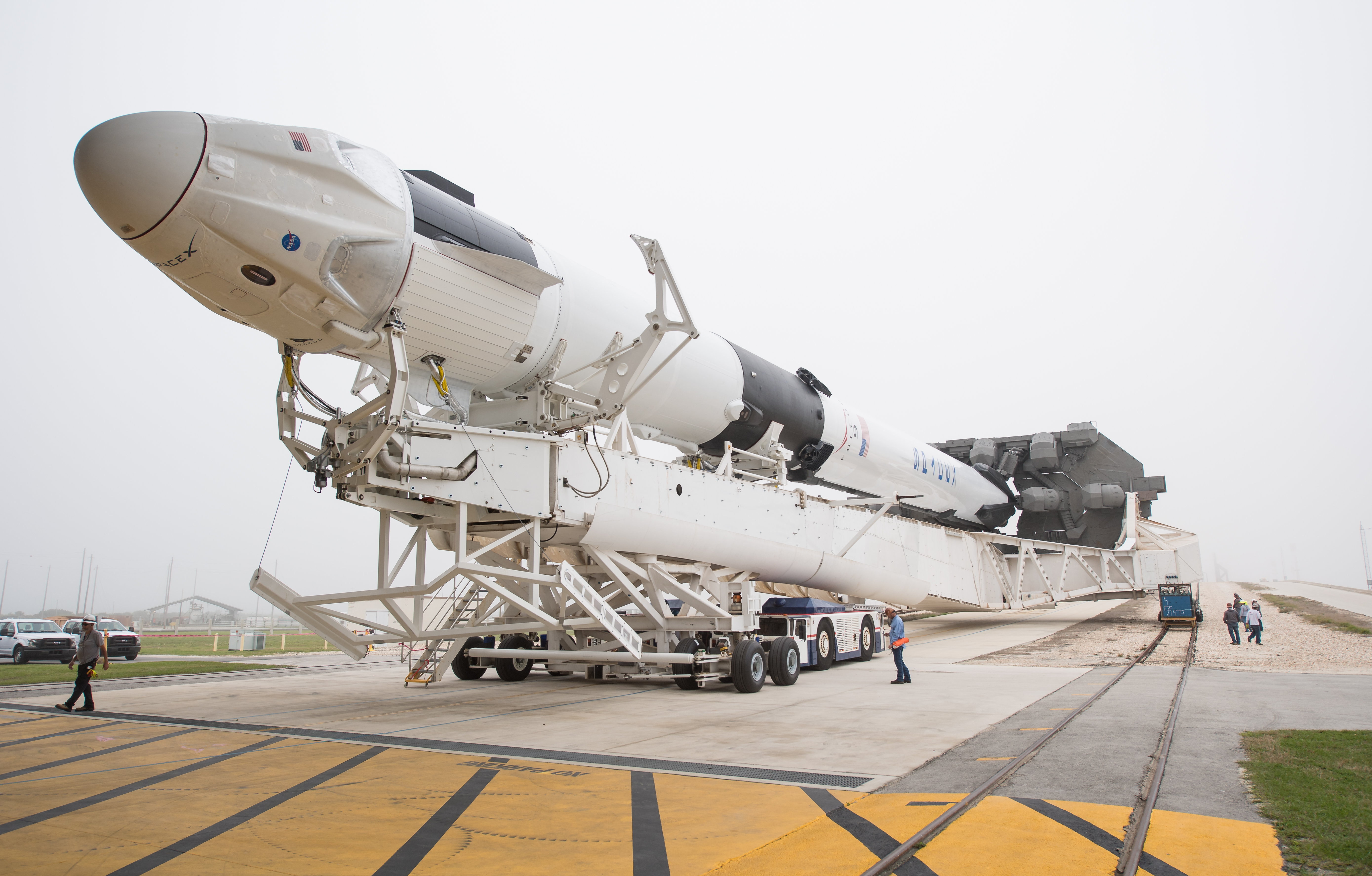
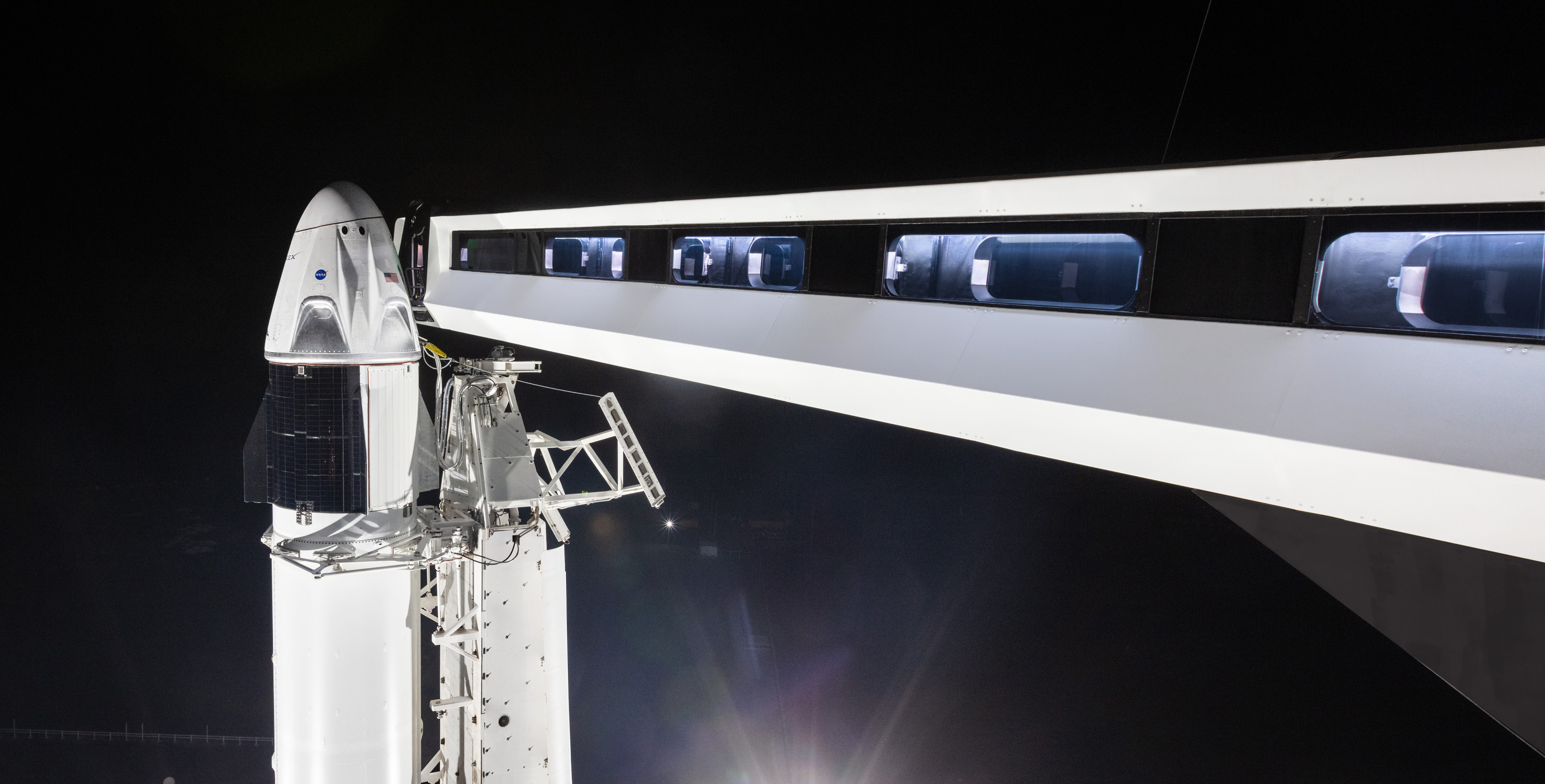
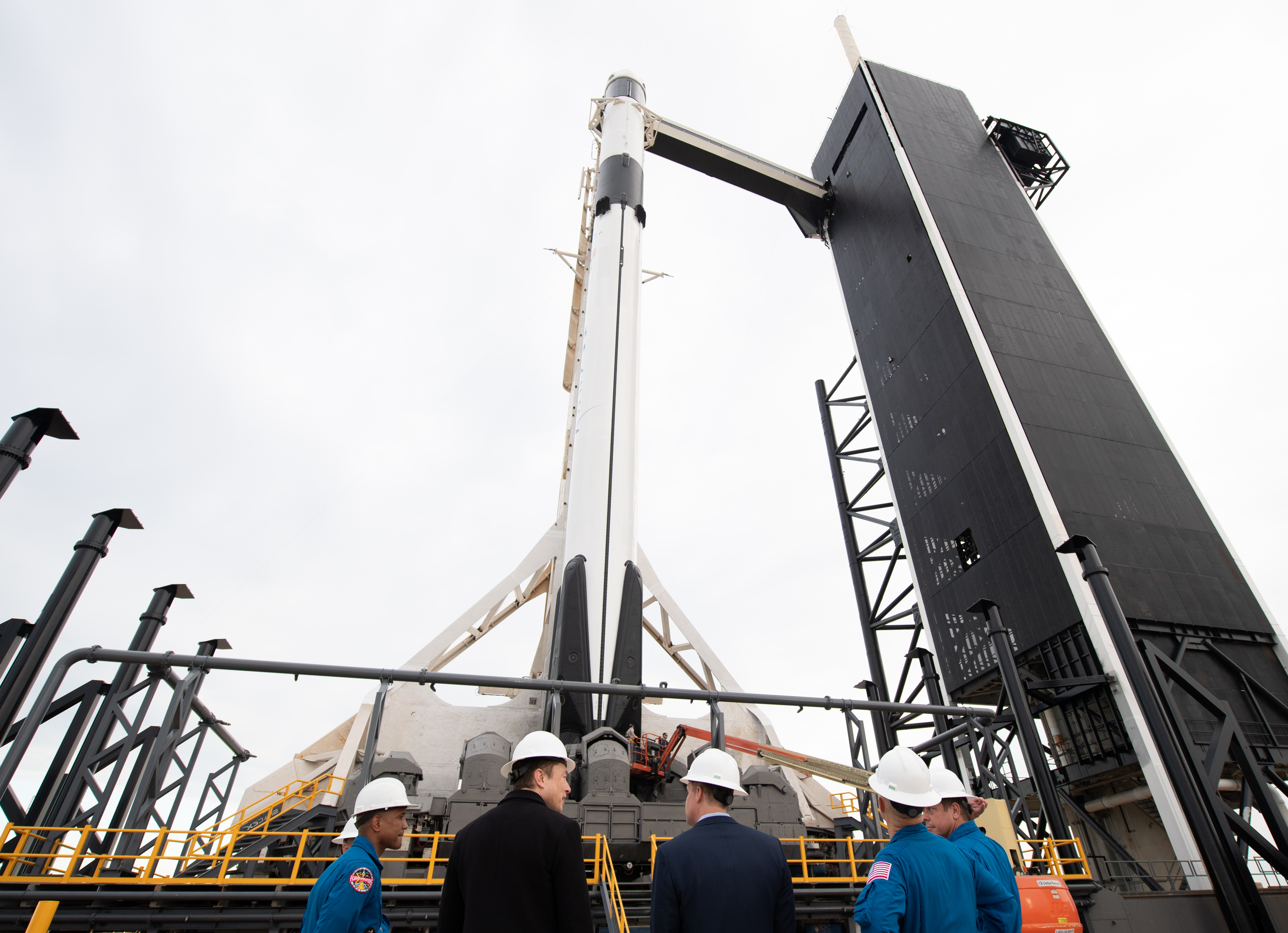
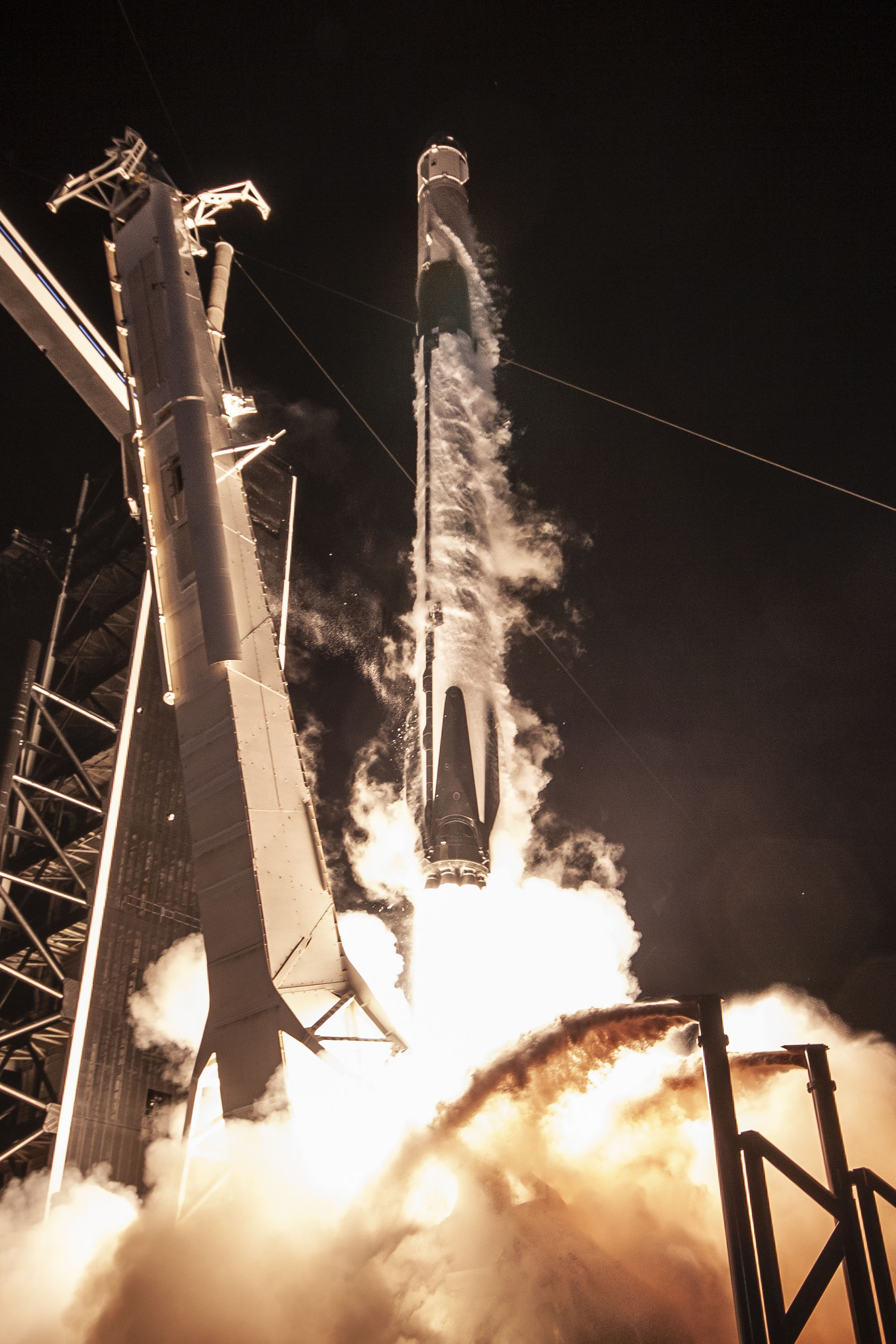
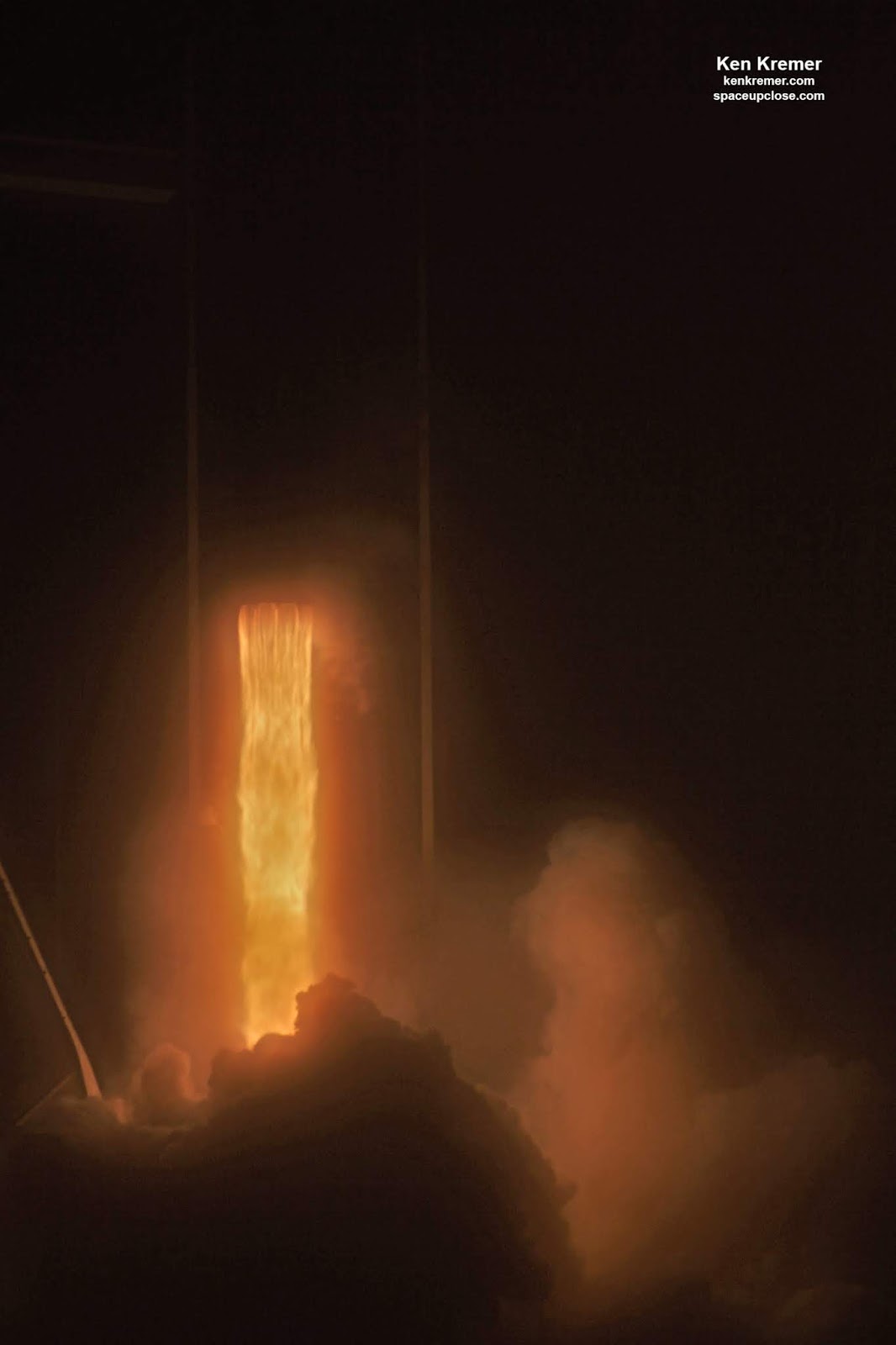
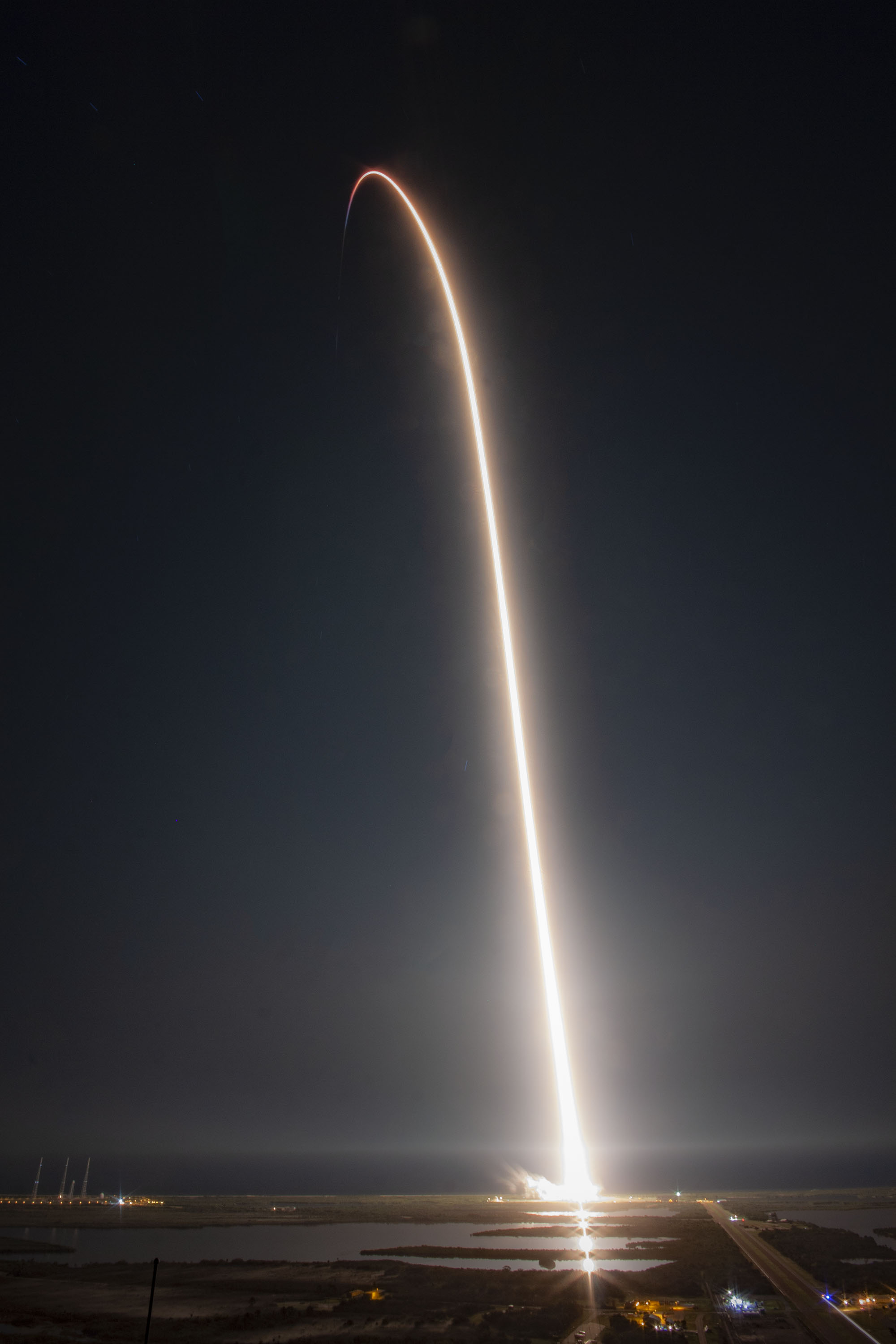
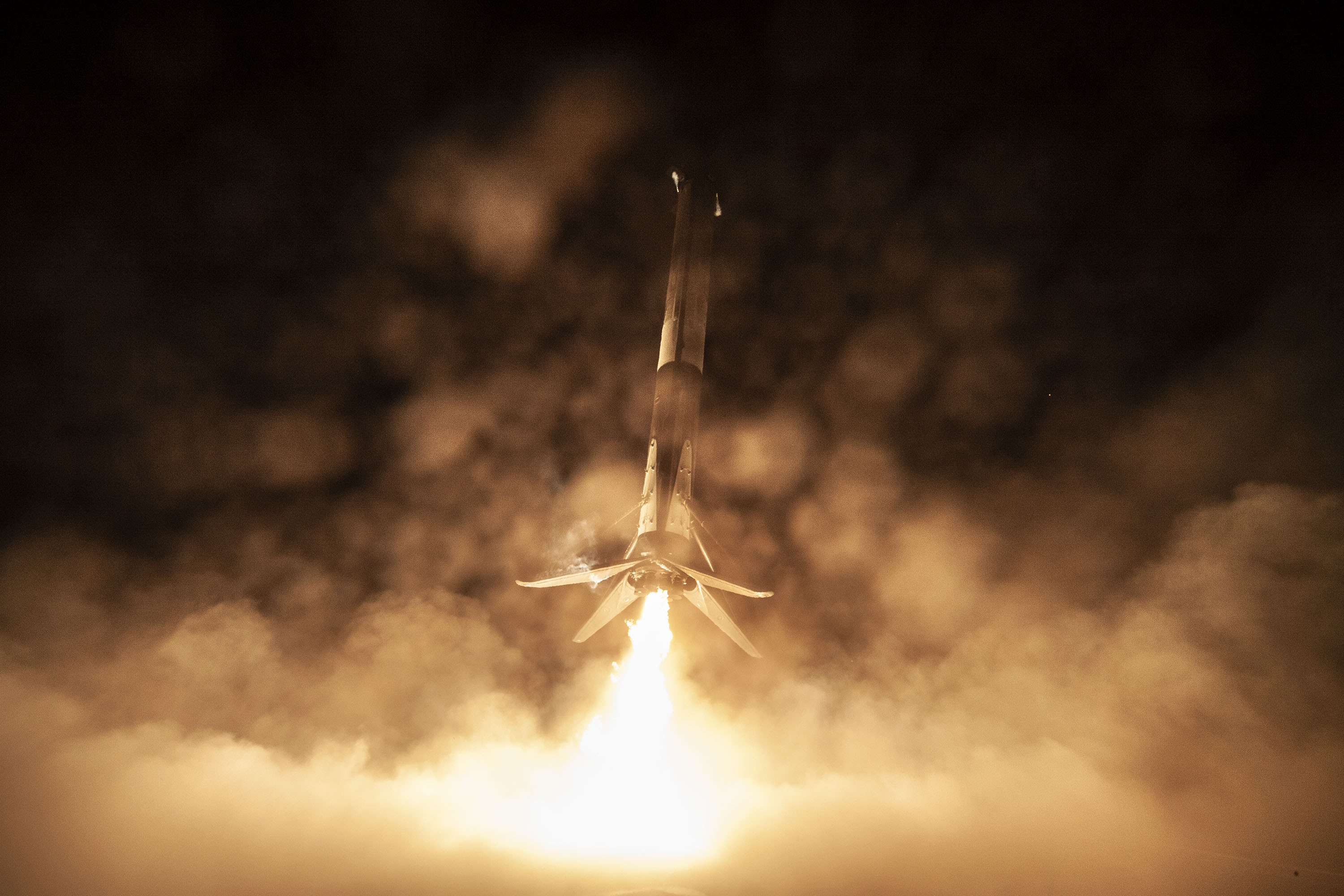
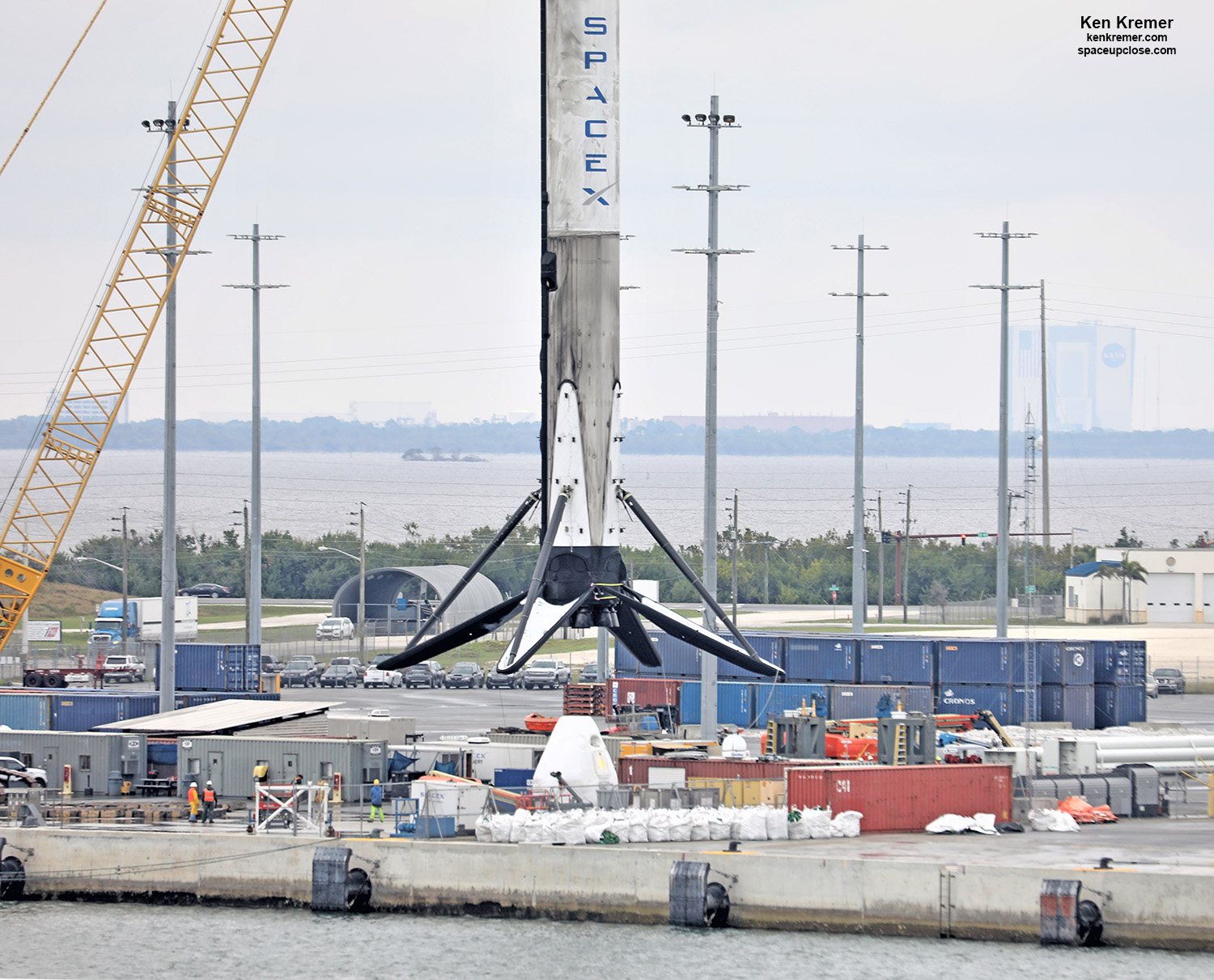
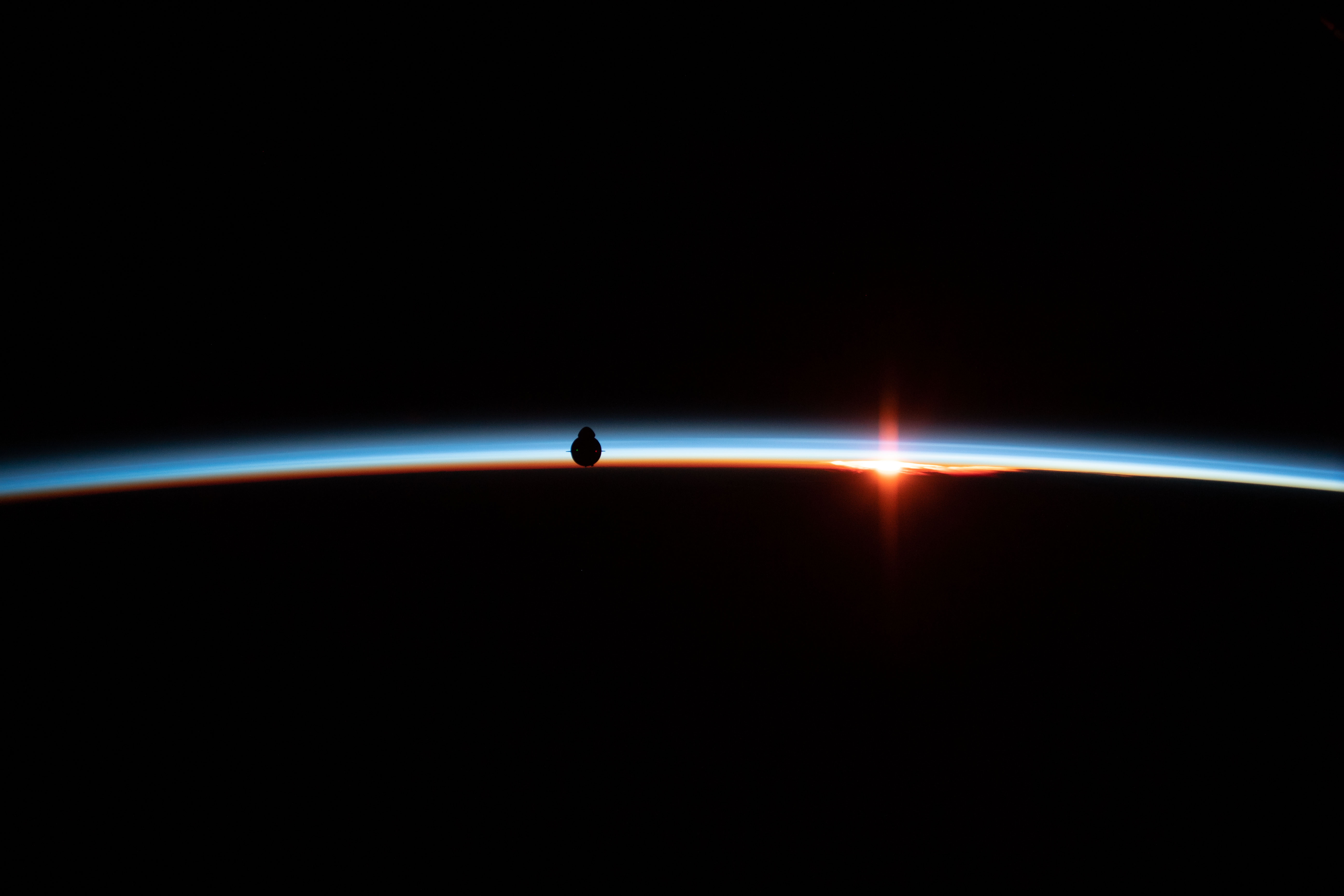
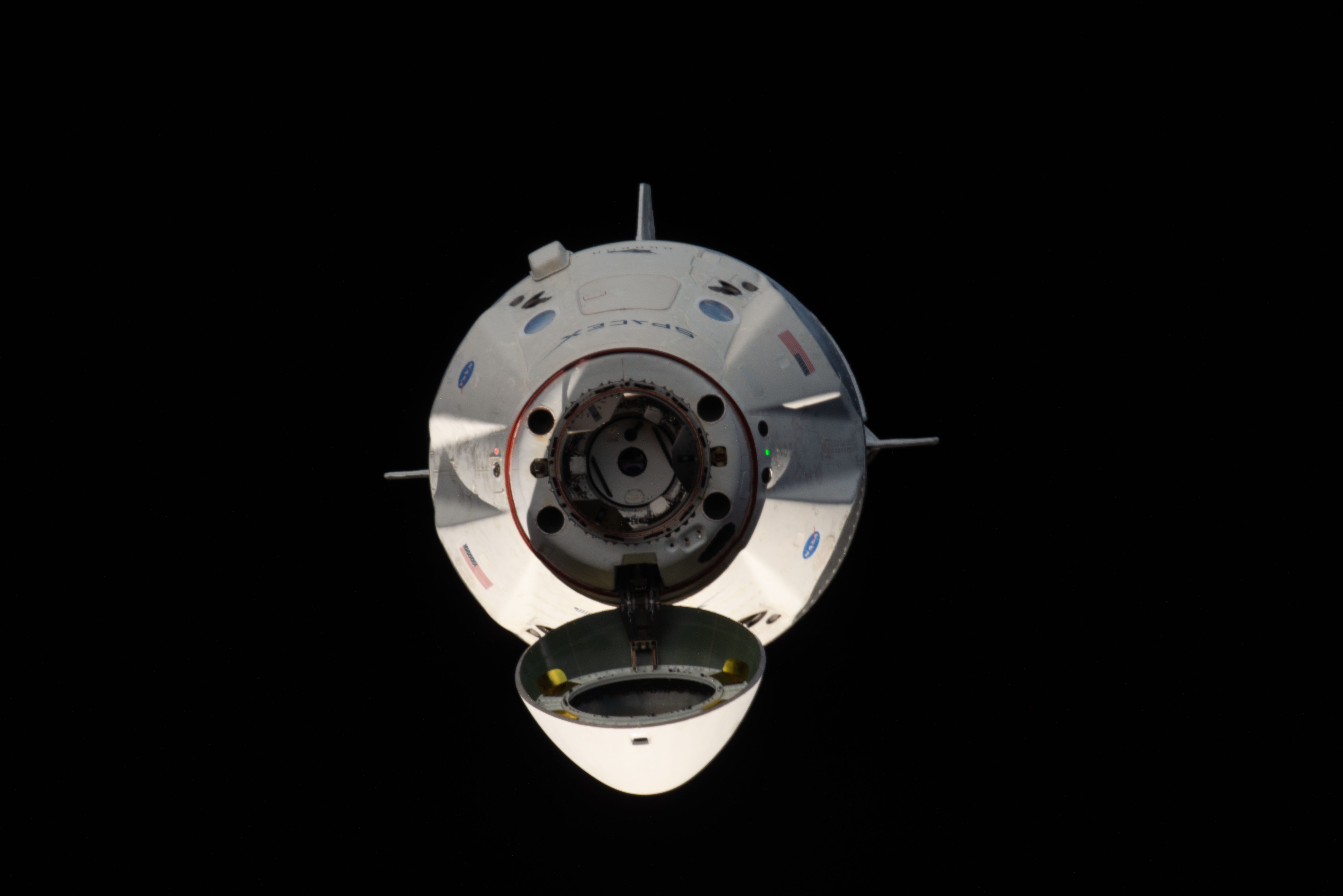
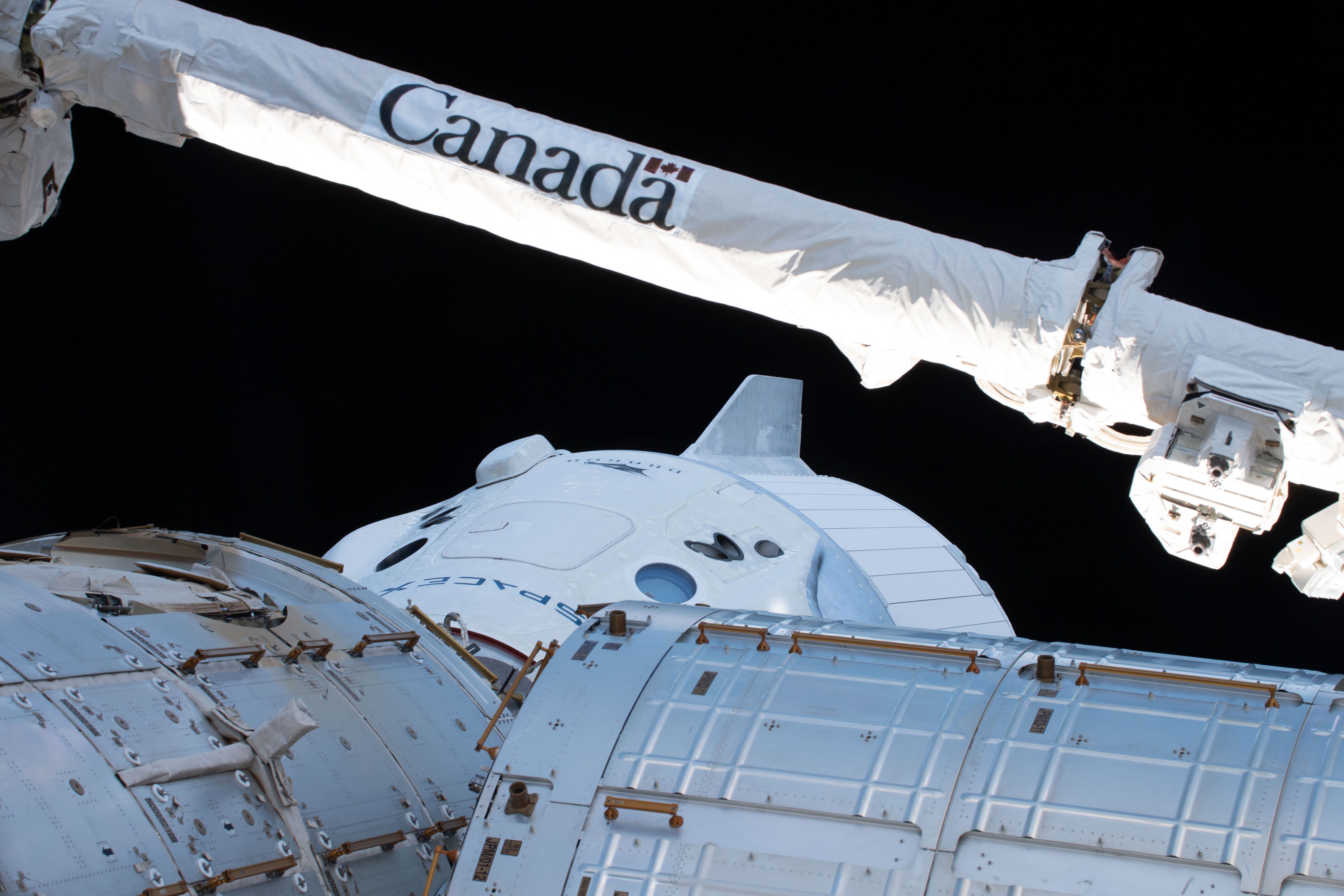
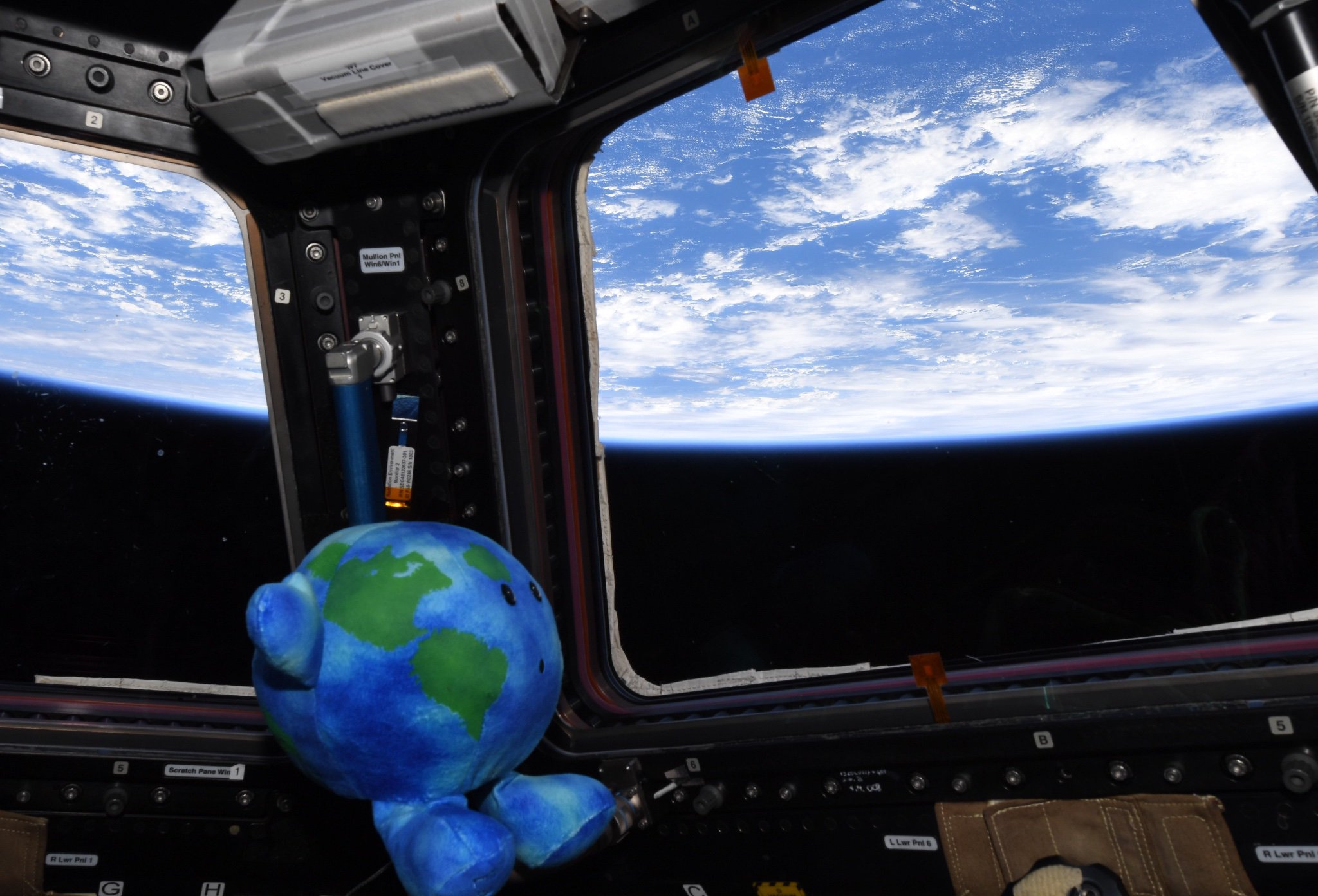
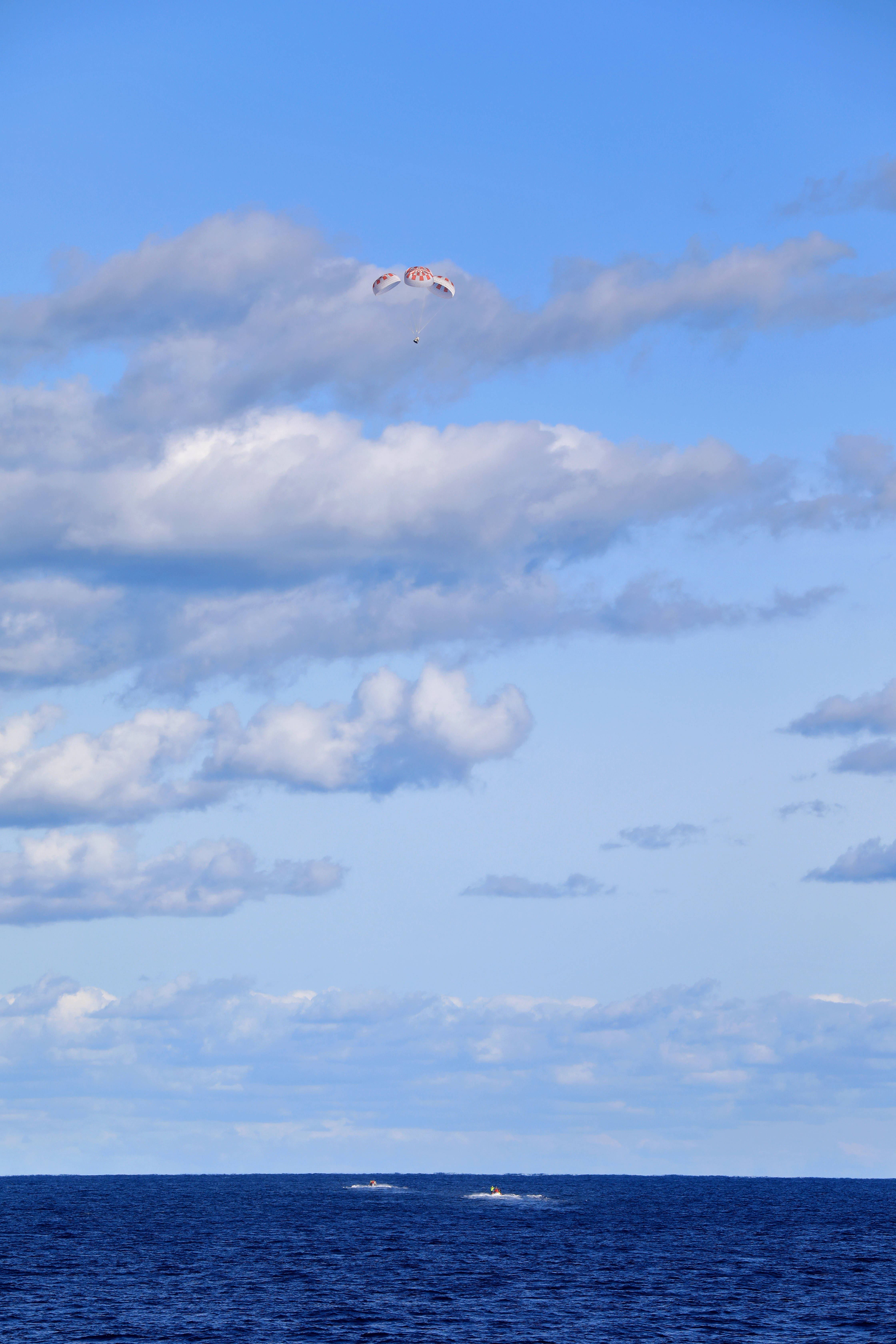
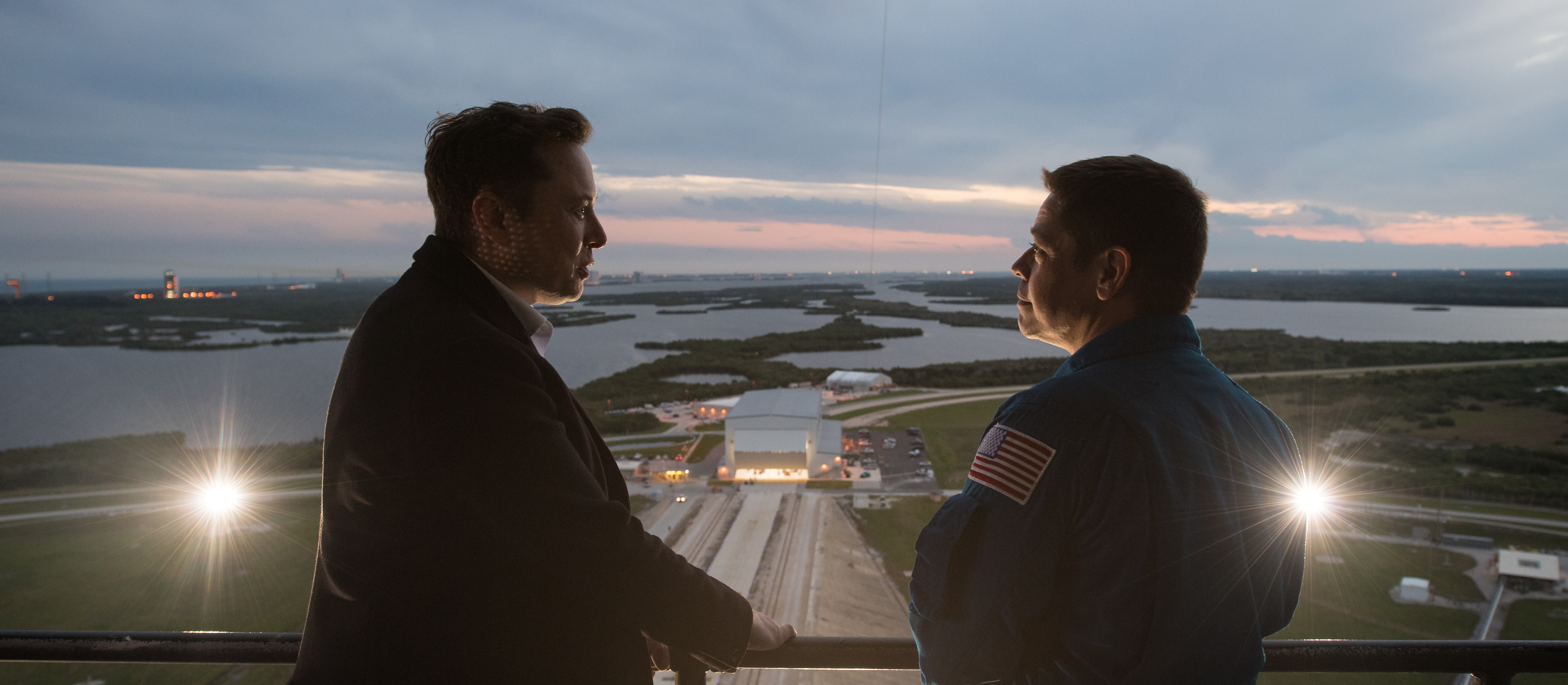
Mission highlight videos from Youtube’s astralpackrat:

